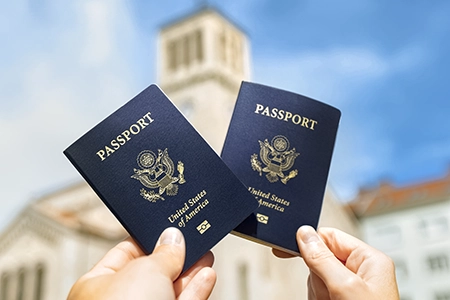In today’s world, advertising and marketing must transcend borders to reach diverse audiences, making translation an indispensable tool. English-to-Turkish translation, in particular, poses unique challenges and opportunities. This article explores the various facets of advertising and marketing translation, emphasising the importance of cultural sensitivity, the critical role of localisation, legal considerations, and future trends in the field. By accurately translating messages across languages and cultures, businesses can effectively connect with their target audience, build relationships, and ultimately drive growth.
Understanding the Importance of Cultural Sensitivity in Marketing Translation
Marketing translation demands a nuanced understanding of cultural sensitivity beyond mere linguistic proficiency. It necessitates a deep comprehension of the target audience’s cultural context and values. When translating English advertising content to Turkish (or vice versa), it’s essential to recognise that certain expressions, idioms, or cultural references may not resonate with the target language, leading to a loss of impact and meaning. To succeed in the Turkish market, brands must craft linguistically precise, culturally appropriate, and captivating messages. Take advantage of the opportunity to engage with your Turkish audience – choose translations that connect with them on a cultural level.
Challenges and Solutions in Translating Brand Messages
Translating brand messages can be challenging when trying to maintain the brand’s essence while adapting to cultural differences. Simply translating the message word-for-word can often fail to convey the intended emotion or humour, particularly when moving between languages as diverse as English and Turkish. To resolve this issue, a process called creative transcreation is used, where the original message is culturally and contextually adapted to evoke the intended response from the target audience. This approach ensures that the brand’s core message and identity remain intact while catering to local preferences and cultural sensibilities.
Techniques for Ensuring Consistency Across Multilingual Campaigns
Maintaining consistency is critical when running multilingual campaigns. To ensure that messaging is uniform across English and Turkish markets, brands should create comprehensive style guides that outline the language-specific nuances, tone, and terminology. The use of translation memory tools can also help ensure linguistic consistency. Regular collaboration between linguists, cultural experts, and marketing teams is essential to align translated content with the overarching brand strategy.
The Role of Localisation in Effective Advertising Translation
The effectiveness of advertising translation is largely determined by localisation. Localisation refers to the process of adapting marketing material to the local culture, traditions, and consumer behaviour. This may include modifying visuals, slogans, and overall messaging to align with local values and preferences in the Turkish market. Successful localisation ensures that the advertising content is relatable and appealing to the Turkish audience, just as it is to English-speaking consumers.
Case Studies: Successful International Advertising Campaigns
Studying successful international campaigns that have effectively translated from English to Turkish can provide valuable insights. For example, a global brand may have adapted its marketing strategy to suit the Turkish market by incorporating local idioms, humour, and cultural references. These adaptations helped establish a deeper connection with the local audience while maintaining the brand’s global image, ultimately leading to a successful campaign.
The Impact of Digital Media on Global Advertising Strategies
Digital media has had a significant impact on global advertising strategies. With the ability to customise content to suit different cultural contexts, including Turkish and English-speaking audiences, it has become easier and more effective for brands to reach their target audience. The interactive nature of digital platforms, such as social media and online advertising, allows for immediate feedback, enabling brands to adapt their strategies better to suit their audience’s linguistic and cultural preferences.
Legal and Collaborative Aspects of Translation
In marketing translation, legal considerations are as important as linguistic accuracy. Advertisements must comply with the target market’s legal standards and cultural norms. Missteps can harm a brand’s reputation and lead to legal repercussions.
Legal Considerations in International Advertising Translation
When translating English advertising content for Türkiye, it is important to understand the legal framework. This involves knowledge of advertising laws, consumer protection regulations, and intellectual property rights. Adherence to these legal requirements is essential to avoid potential legal disputes related to the translated content.
Best Practices for Collaborating with Translation Agencies
It is crucial to collaborate effectively with translation agencies for successful marketing translations. It is important to choose agencies that specialise in English-Turkish translations and have a profound understanding of both cultures, as it can significantly improve the quality of the translated content. Regular communication, clear briefs, and feedback loops are essential to foster a productive relationship with these agencies.
Evaluating and Looking Ahead in Marketing Translation
Finally, evaluating the effectiveness of translated marketing materials is essential for continuous improvement. Analysing audience engagement, feedback, and campaign performance in the Turkish market can provide insights into the effectiveness of the translation and localisation strategies.
Evaluating the Effectiveness of Translated Marketing Material
To ensure the success of translated content in the market, it is important to assess its performance regularly. This evaluation should include quantitative metrics like sales figures and website traffic, as well as qualitative aspects like customer feedback and brand perception. By analysing these metrics, future translation efforts can be better tailor to audience preferences, leading to more successful outcomes.
Future Trends in Global Marketing and Translation Technologies
Advancements in translation technologies and the growing significance of digital marketing will shape the future of advertising and marketing translation. Machine translation, AI-driven localisation tools, and other technological innovations are expected to play a major role in this development.



